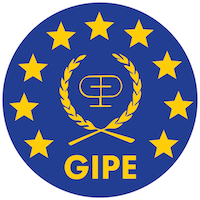NEW TRAIN HEADING FOR SPAIN – THE ‘HYPERLOOP’ CAPSULE TRAIN MOVING AT 750mph
 A train travelling at 1,200 kilometres per hour which is 750mph will be able to carry passengers from Barcelona to Madrid in 30 minutes. And it is expected to be on track in Spain within 3-4 years. Known as a Hyperloop, the high speed capsule is very similar to Japan’s bullet trains and uses very little energy despite getting from Madrid to Valencia in little under 20 minutes.
A train travelling at 1,200 kilometres per hour which is 750mph will be able to carry passengers from Barcelona to Madrid in 30 minutes. And it is expected to be on track in Spain within 3-4 years. Known as a Hyperloop, the high speed capsule is very similar to Japan’s bullet trains and uses very little energy despite getting from Madrid to Valencia in little under 20 minutes.
It is the brain child on US business tycoon Elon Musk, who also created PayPal, Tesla and Space X – the latter two being involved with the development of Hyperloop Transportation Technologies which has 420 people from all over the world working for the company in exchange for a slice of its shares.
Chief Executive Officer Dirk Ahlborn says a model of the Hyperloop has been tested over an 8 kilometre stretch of California’s Quay Valley and it is now ready to roll out to Spain.“At the end of 2014 we finished the feasibility study; we’ve got the technology, we’re working on the licences, and next year we will start building”, Ahlborn stated at the recent business entrepreneurial summit in Spain.
The test-run in California is a prototype which works?, the CEO revealed, and with which Hyperloop Transportation Technologies expect to move 10 million people a year within Spain alone.“Within eight years, we’ll start making a profit on our investment,” Ahlborn assured the backers.
Certain changes are being made to the design almost daily, however – the logistics of embarking passengers on vehicles which leave the station every 30 seconds needs considerable thought. In principle, passengers would be almost lying down on reclining chairs in single file whilst travelling. Ahlborn admits that although around 20 cities in Europe have shown an interest in Hyperloop technology, it would have more success in Africa, Asia or the Middle East where journeys between civilisation can take many hours or even days – any work could be eased in the countries owing to the bureaucracy involved in Europe.“Harder than designing the technology and obtaining the funds needed is getting public approval, government approval and the relevant papers signed off, because it is a very long-term infrastructure project,” Ahlborn explains.
As it is a private-sector venture, no public funding is, or will be involved in the foreseeable future, although the CEO says the cost of setting up a Hyperloop transport connection is ‘far lower’ than that of a mainstream high-speed railway link such as Spain’s AVE network.
The future line between San Francisco and Los Angeles, a 600 kilometre distance would be covered in half an hour and is expected to cost in the region on US16 billion dollars, compared with an estimated investment
of at least US68bn which a train connecting the two west coast cities would require.

